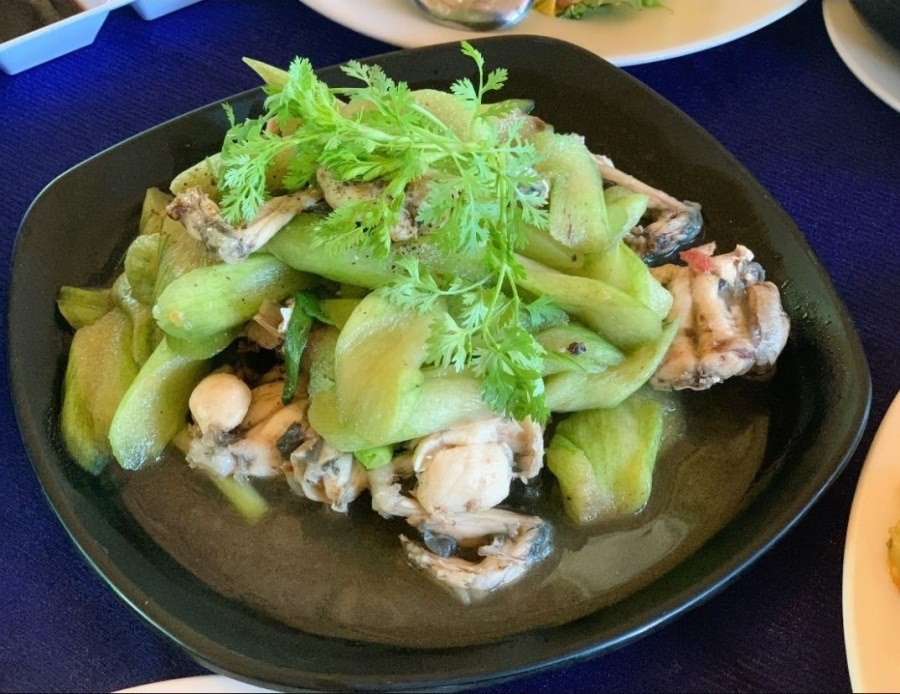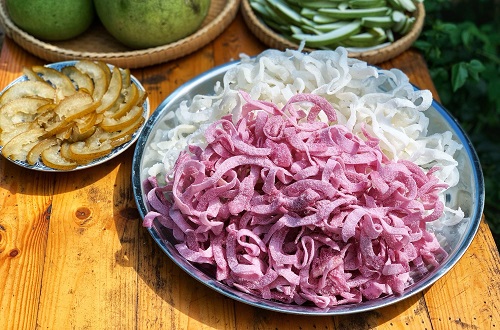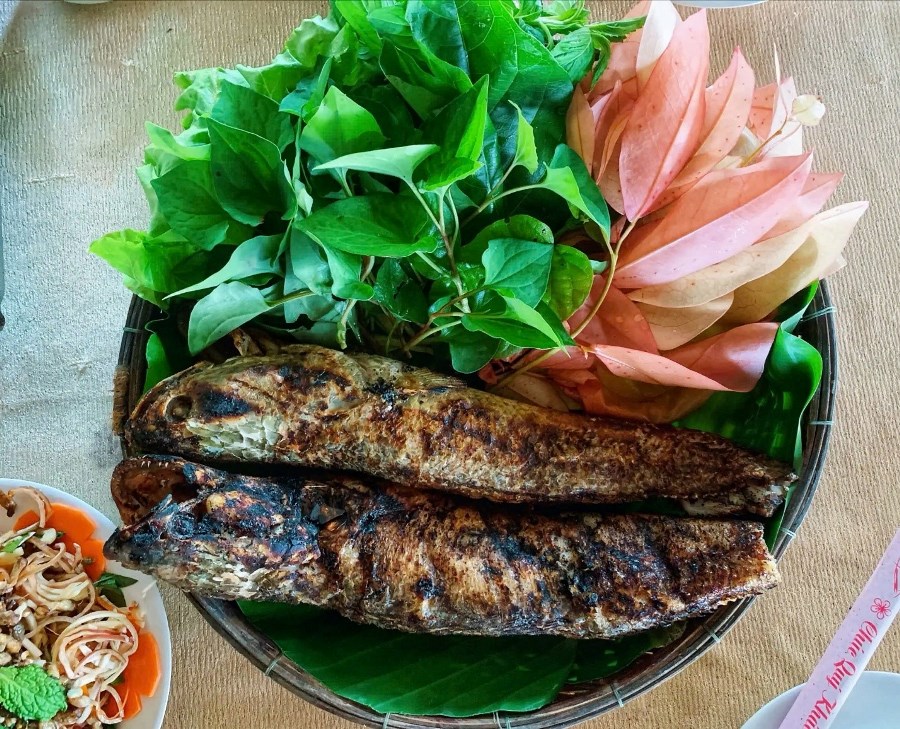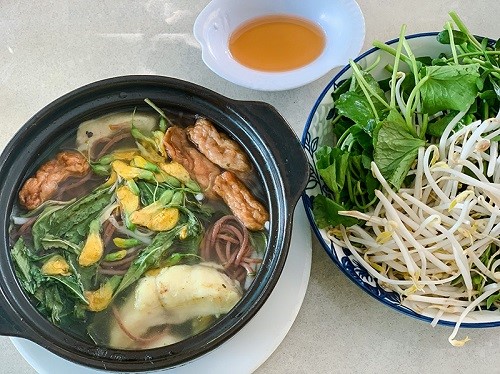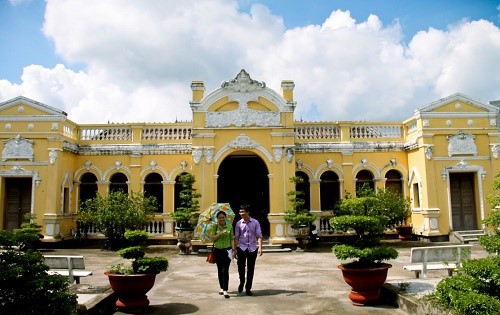
In the middle of the immense forest were numerous ponds, pools, and swamps. The topography of the Mekong Delta at that time and even now has been the lowlands with an average height of fewer than 2 meters above the sea level. From September to November each year, floods from the Mekong River make the southwestern nearly submerged in the sea of water. Therefore, to build houses, huts, camps, the first thing is to build the foundation somewhere high and relatively flat. Those places are commonly found along rivers and canals and are convenient for transportation and communication...
Construction materials were almost entirely on-site: trees, leaves, thatched roofs, and ropes. At first, unlimited wood for house construction was often wild trees available in the forest such as Cajuput, Avicennia, mangrove apple, Nauclea, crape myrtle, Jamblon (to make columns, trusses); thatch, Cyperus Iria, Nipa leaves (for roofing), Nipa palm strips, corn buds (buds which have not become the leaves of nipa trees) for tying. The tools for building houses were very simple: hammers, knives, machetes, slabs (cut, chop, clean the floor), hoes, shovels (dig or cover), saws, plane, chisel...
First of all, people used a shovel to dig soil nearby to build the foundation. While waiting for the ground to dry, they felled the trees and used boats to carry or push them home during high tides. From 10 to 5 days, the ground was dry, and they started to dig holes to erect pillars, place rafters, roof the house, and put up walls. In the area with fierce beasts, the walls and doors were full of wooden chokes which were as big as strong men’s biceps. They also used clay to make a 3-lump stove for cooking. The leaf bones were dried and braided to make beds or dining tables. The large logs were cut into small ones to use as the pedestal (seat).
After quite a long time, about a dozen or 20 years, or maybe longer, simple houses, huts, and tents were set up, forming small hamlets, villages. ... Then, this land was governed by Nguyen Lords, the Nguyen Dynasty, and then French colonists. As refugees’ life was relatively stable, they wished to renovate and upgrade their houses. At that time, people planted many bamboos, coconuts, areca nuts, vegetable hummingbirds, and nipa palm trees in the back yard or around the garden. Those were ideal materials for making houses at the time.
Although it was easy to bury the column ends, its inconvenience was that the pillars began to be broken and decayed. The house would then be wriggled, its broken structures became unbearable to severe weather such as rain, sun, and storm. People began to make kê tán houses, modeled after the ones in the countryside of Ngu Quang and North Central regions. Housing in the Mekong Delta at that time was popularly in two types: "nhà trính" and "nhà rọi".
"Nhà trính" had a solid and quite complex structure with many interconnected pillars, trusses, oblique, and crossbars. Houses, pagodas, town halls, rich houses ... used to be built in this way. An appropriate house had 32 big and small pillars, which strengthened the sturdy house and made it very difficult to be damaged by time or weather.
"Nhà rọi" was simpler with 4 main pillars in the middle, 4 others in the second row, and the other 4 in the third row. Sometimes to save money, people used two sticks sticking on the central slant to support the rafter. In this case, the central slant had to be bigger and a little stronger than usual. Consequently, there were only two main pillars while the others were the same for the second and third rows in the house.

Rural housing in Bac Lieu. Photo: DUY KHOI
After the new land was reclaimed, and hamlets established, the feudal government at the time and the French colonialist later demarcated the administrative boundaries for easy control. Communes, villages, and districts were established. There was usually a communal house in a village, and it was considered as a local architectural structure. Here people worshiped Tutelary God of the village, who was either a great contributor to the local community, or a national hero. The communal house was usually designed in the style of “nhà trính, with large pillars, solid structure, and exquisite decoration. It was built in a good feng shui location. Inside the communal house, there were paralleled sentences, decoration patterned boards, curtains, ancestral tablets, and simulated weapons, all of which created a sacred and peaceful spiritual space. Typical communal houses famous for large scale and unique architecture in the Mekong Delta so far have been Binh Thuy Communal House (Can Tho), Chau Phu (An Giang), My Phuoc (Dong Thap) ... In addition, there are old houses with unique architecture, combining Eastern features with Western ones. For instance, Binh Thuy Ancient House has Western exterior but Vietnamese traditional architectural interior. Similar architectural styles can be found in Dong Hoa Hiep Ancient Village (Cai Be, Tien Giang), ancient houses in Huong Liem (Thanh Phu, Ben Tre), Tan Loc Islet (Thot Not, Can Tho) …
It was rather quick to build a house with buried pillars, sometimes just in a few days, on the condition that the foundation was covered and dry in advance. Trees were cut down and trimmed; holes were dug to bury the pillars, rafters, and purlins were put on. Finally, the house was roofed, and then people had shelter from the bad weather. The walls could be made later. It took longer time to prepare for building a “kê tán”, however. The main pillars had to be straight and of the right size, then were trimmed, peeled, sawed, punched in holes for rafters, and finally fed "oil" to combat termites. When about to build a house, people put pillars and rafters in the right position and tried assembling to check their accuracy. When the time to build it came, they installed joints and removed the seals, which was called “Giao kỷ". There used to be numerous valuable trees such as ironwood, Pyinkado, Lagerstromia, Techicai Sitan... in the region. When they used bamboos to make purlins and rafters, they had to submerge them in mud for about six months to harden them for termite prevention.
However, it took a very long time (more than 10 years) to build a lot of houses, communal houses and pagodas like Huong Liem Ancient House in Dai Dien Commune, Thanh Phu District, Ben Tre Province. According to the current homeowners, Mr. Huong Liem used shavings to pay for its builders who came from the North. A bowl of shavings equaled to some silver. Because of too long construction time, Mr. Huong Liem tried to match local people for these workers to help them overcome their homesickness. In the end, some of these expatriate builders became "descendants of the family," and worked hard to complete the project. Most of them later stayed at Dai Dien.
One of the various local cultural traits in the story of how to build a house in the Mekong Delta in the past and many villages is "taking turns". This means that the whole neighborhood helps one family to build a house without fees in one turn, and then another family in another turn. Therefore, the story of how each family has built their house sometimes includes a deep feeling of gratitude to all of their neighbors...
Source: Can Tho Newspapers - Translated by Diep Truong







